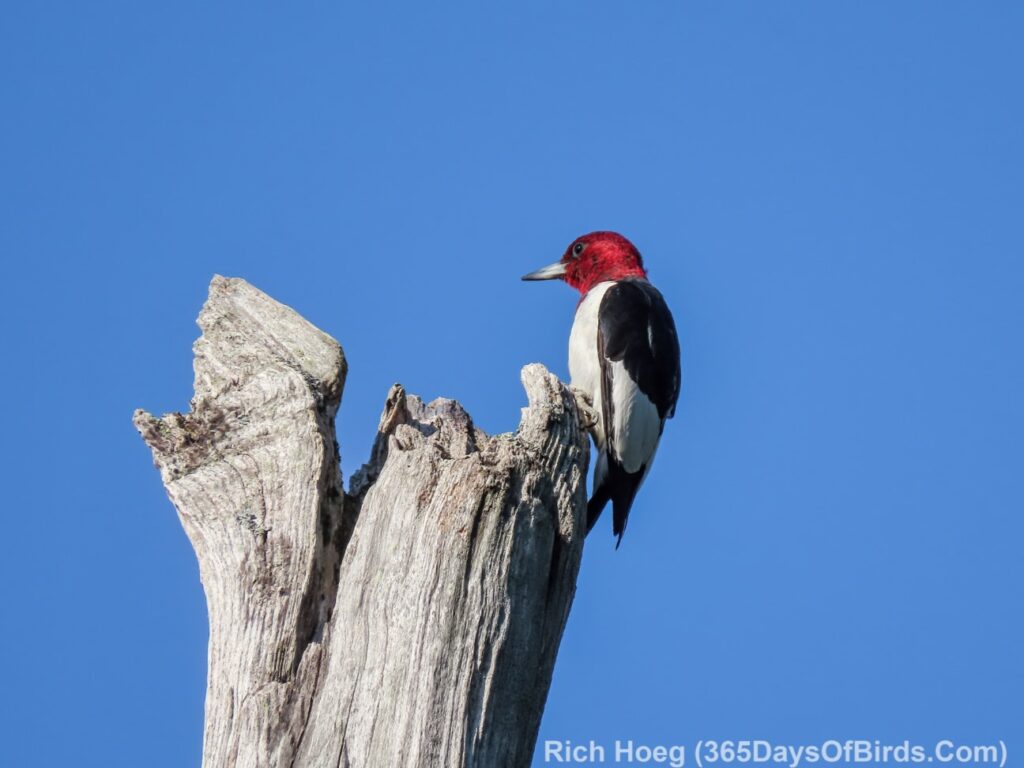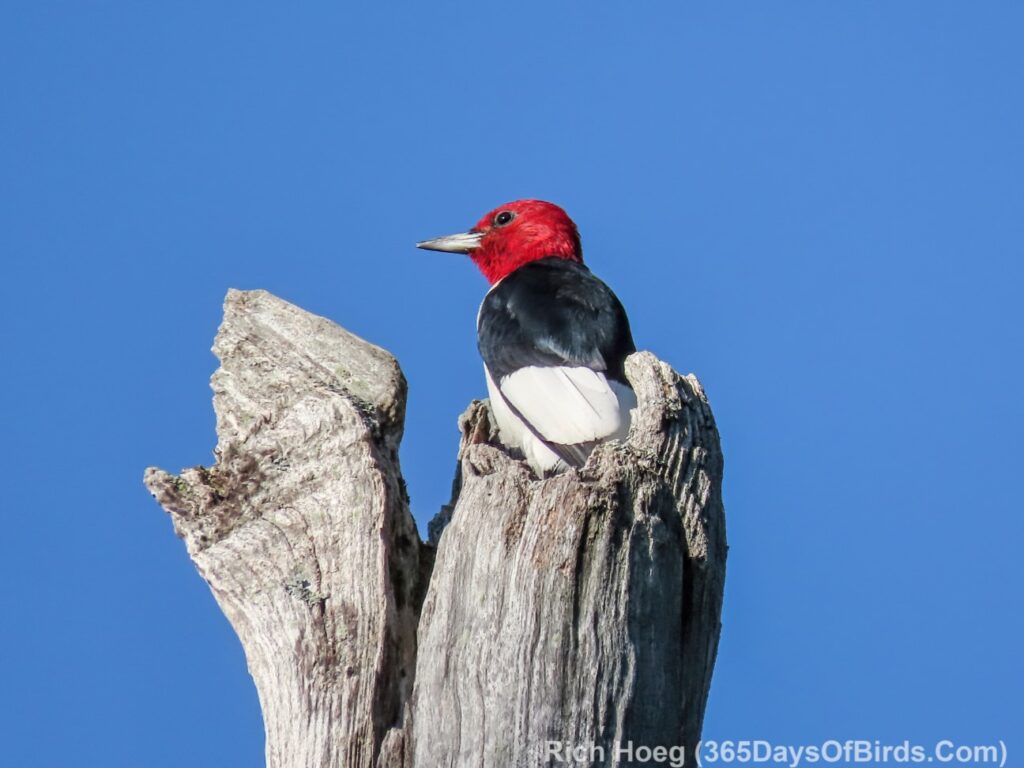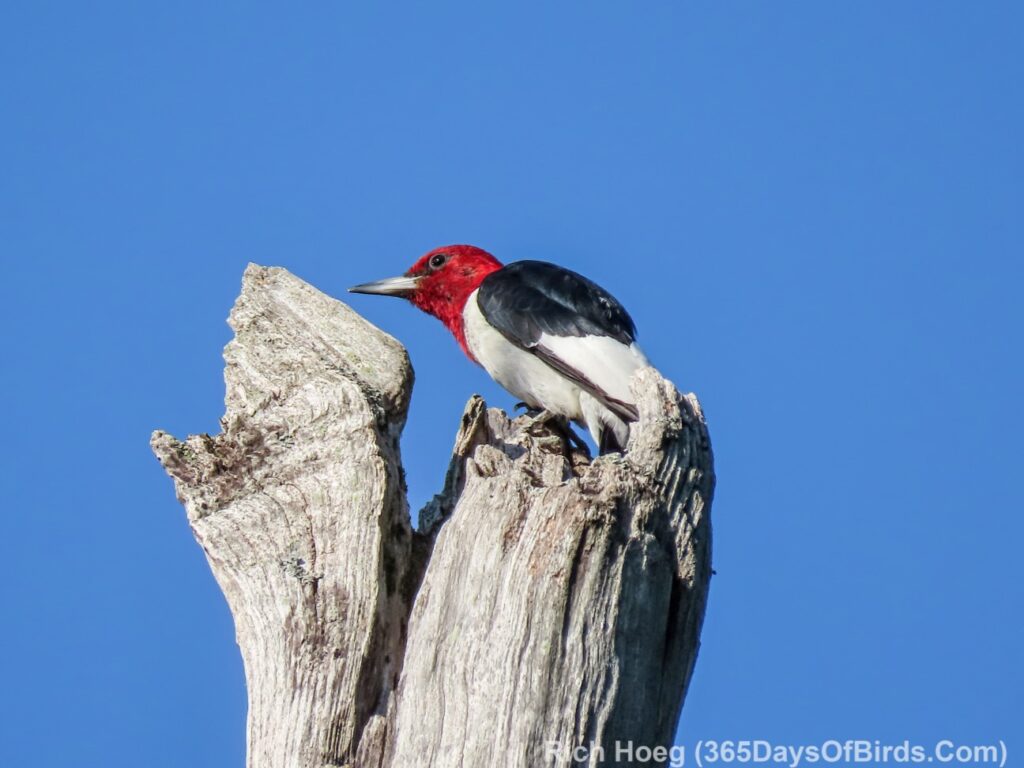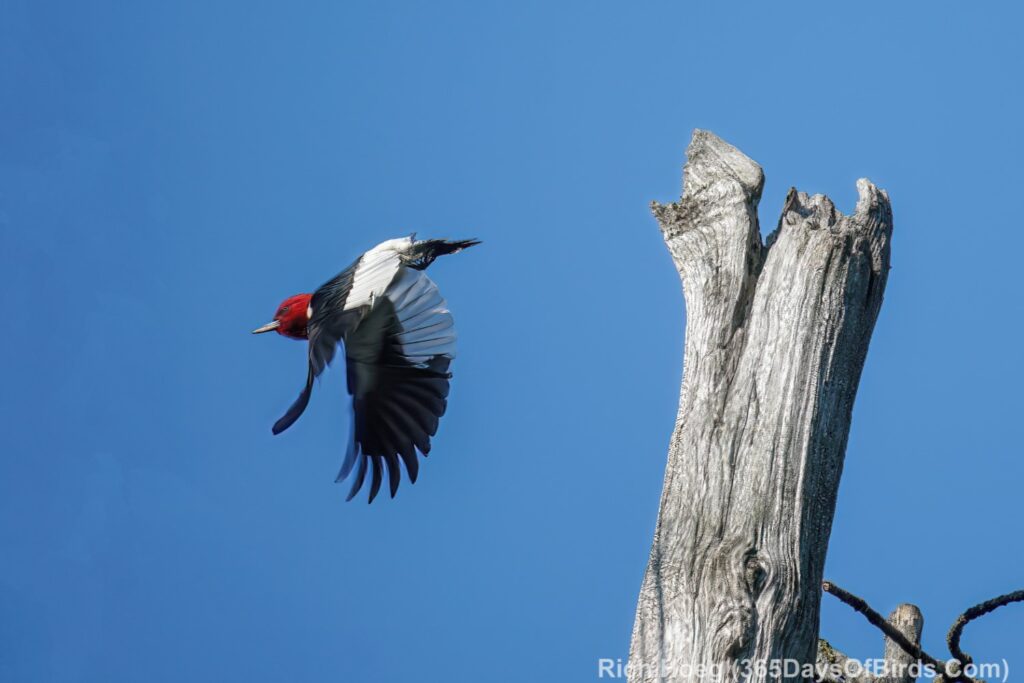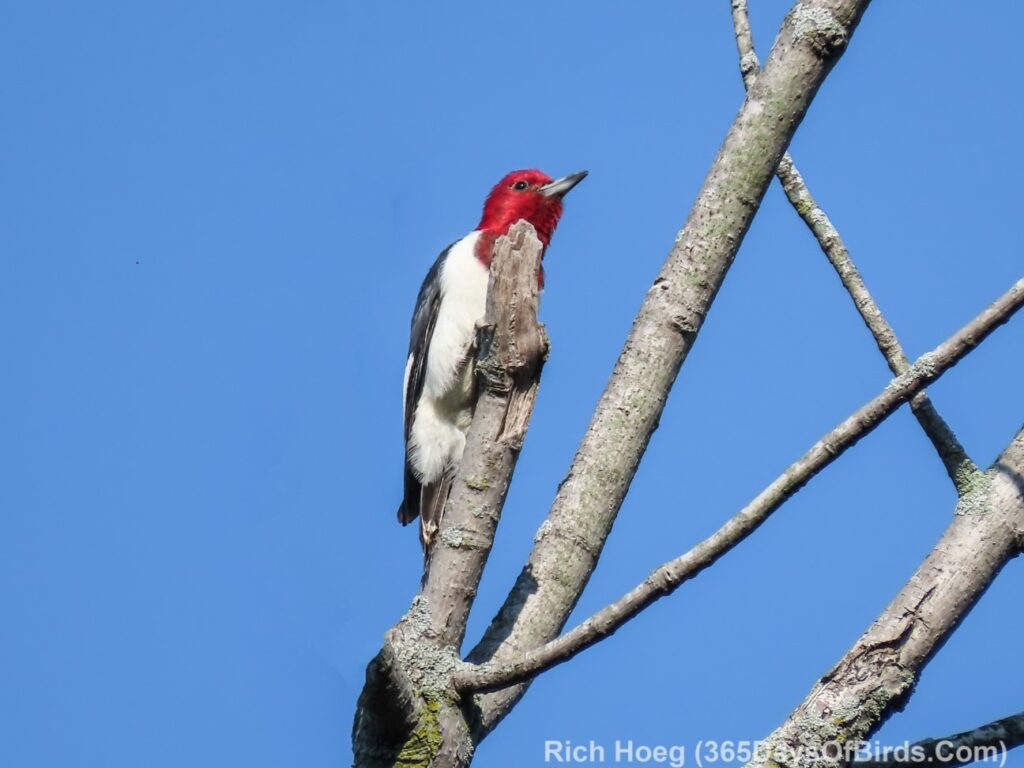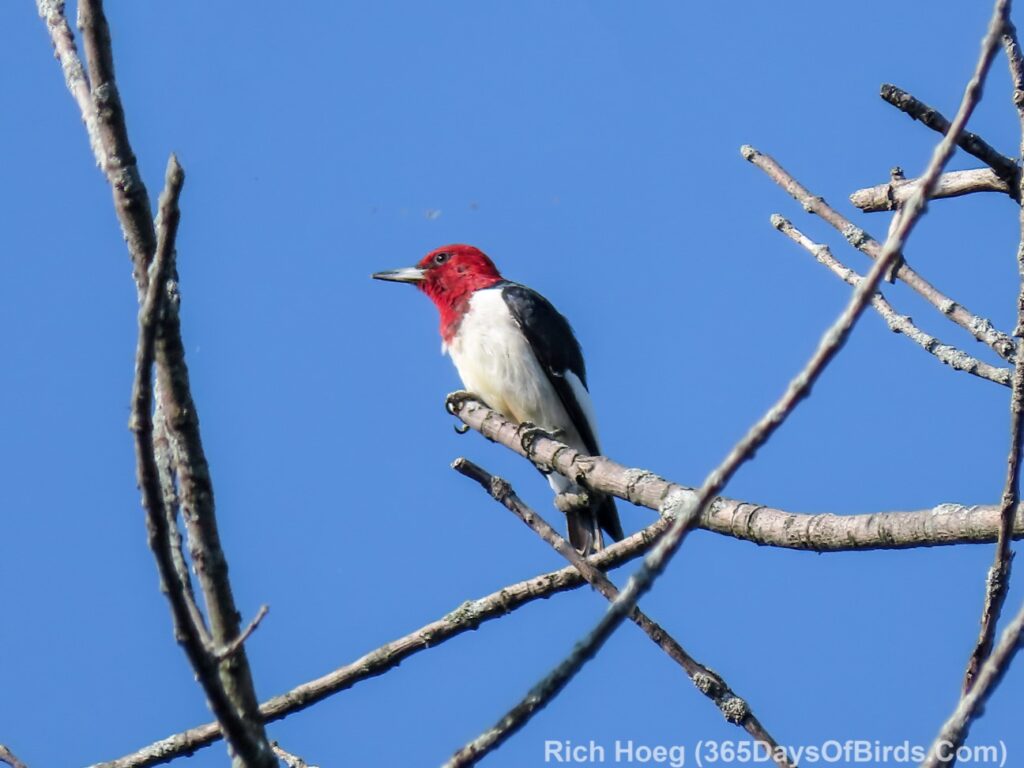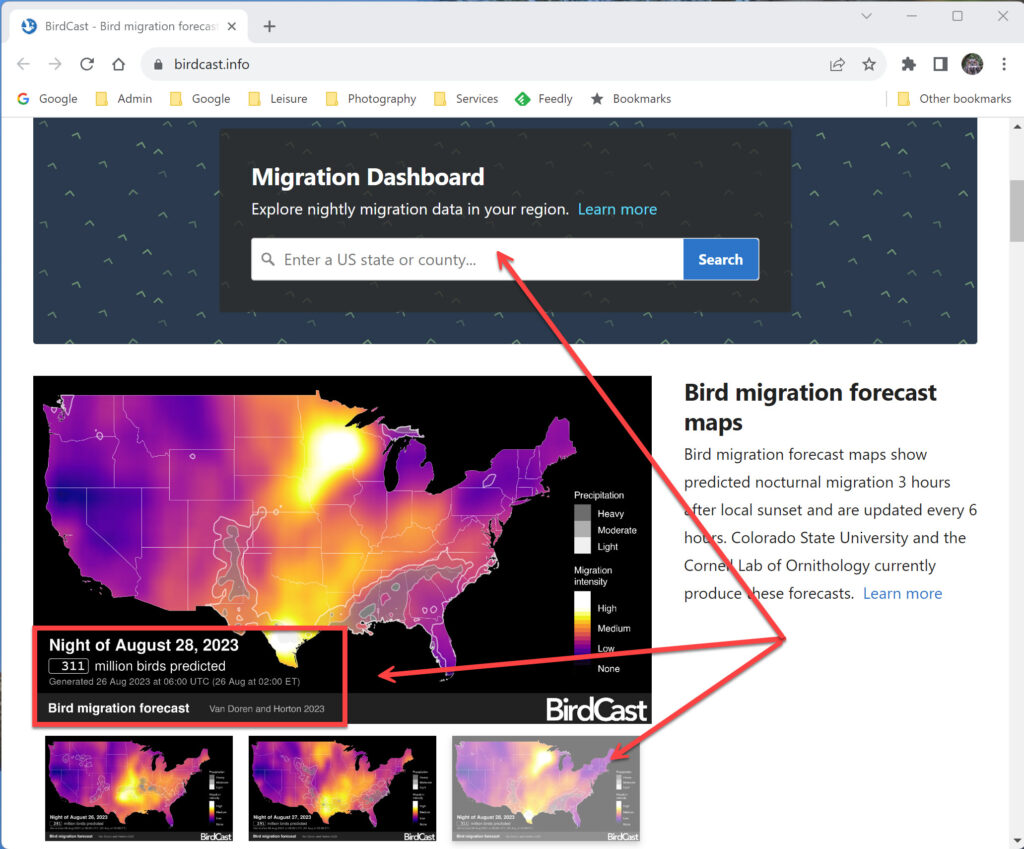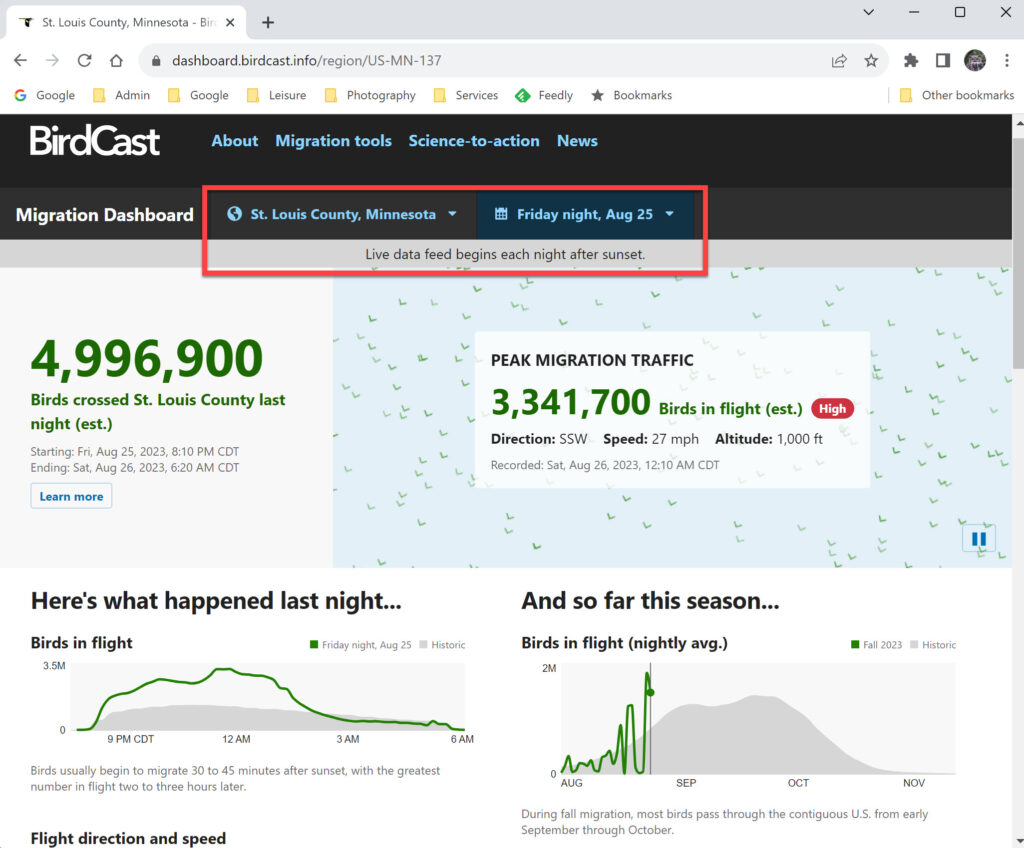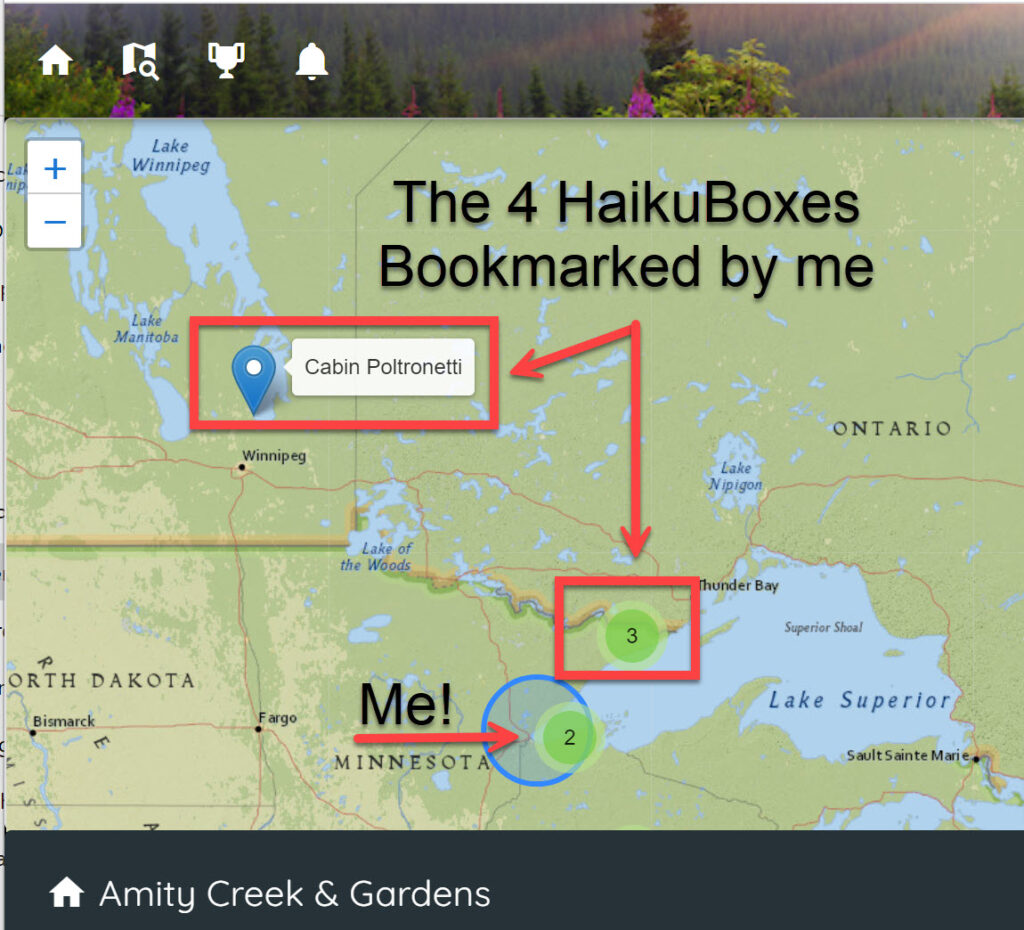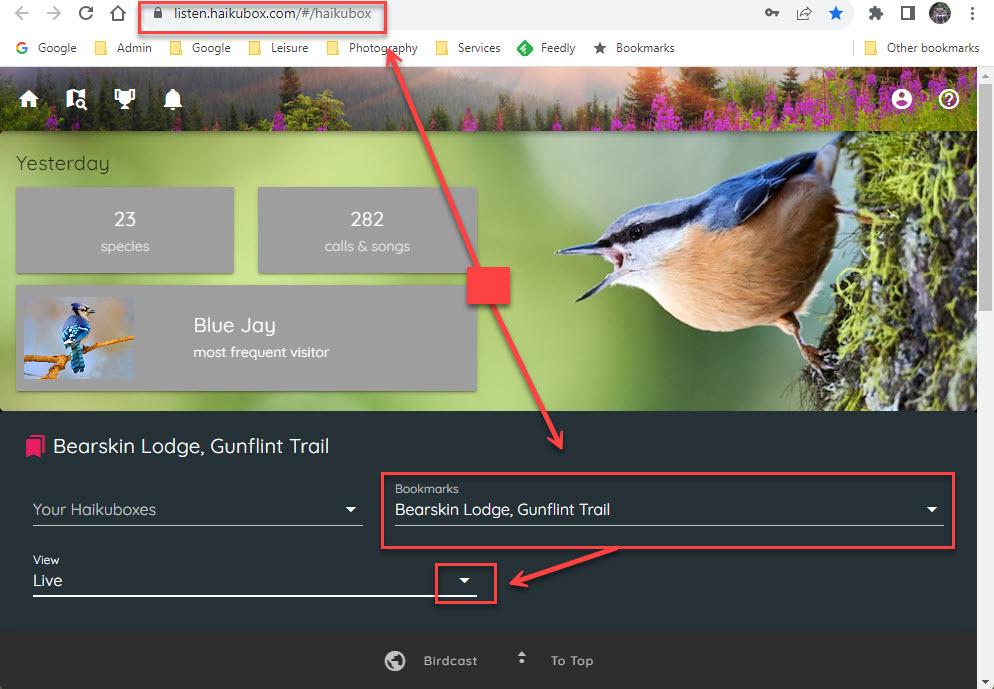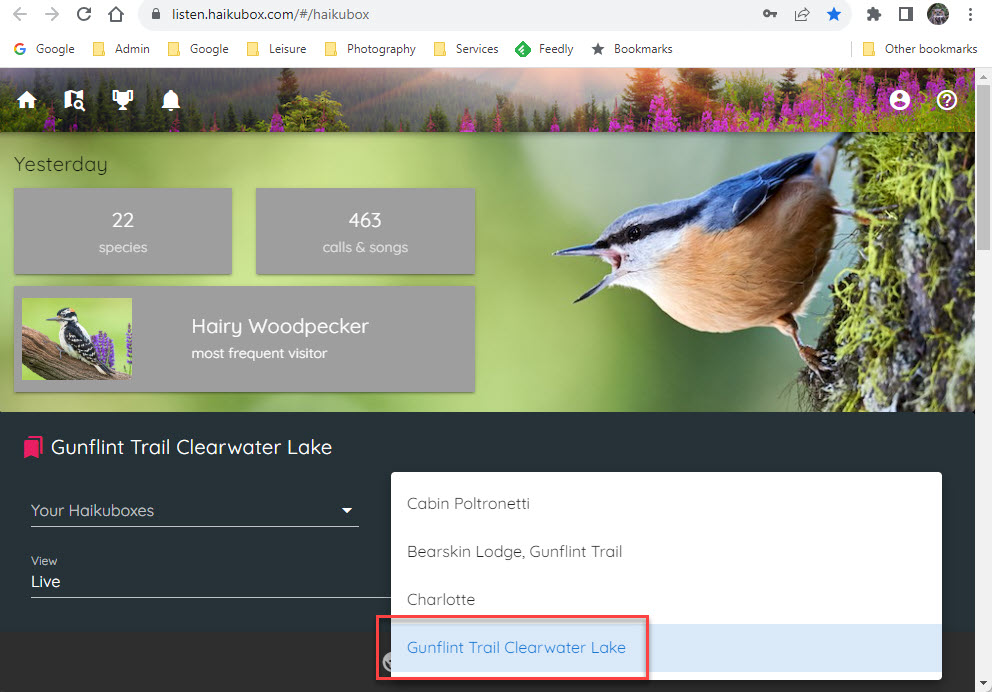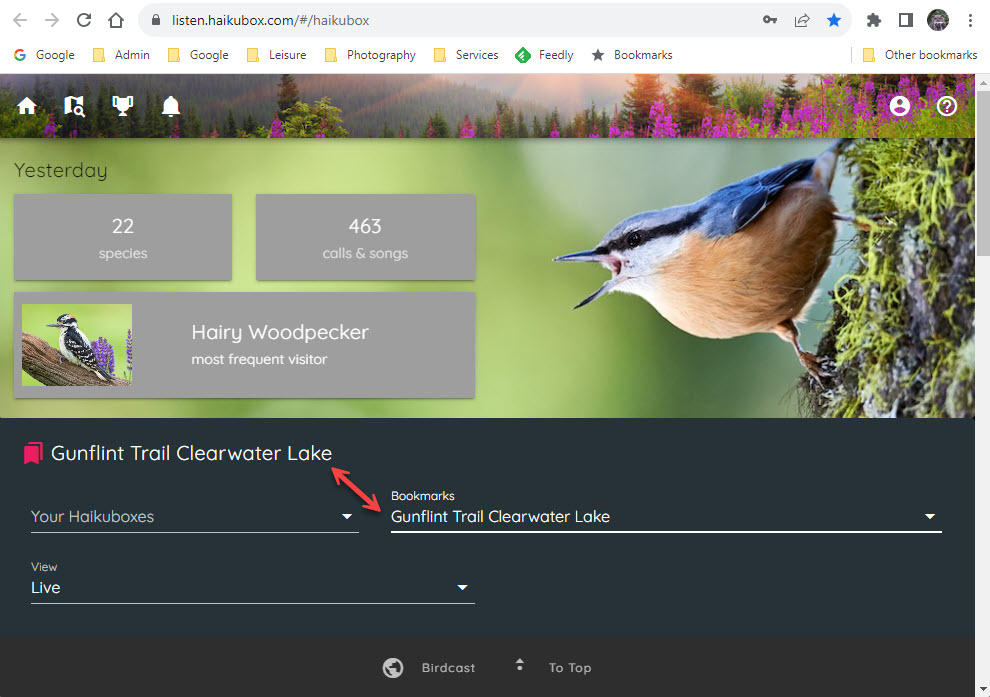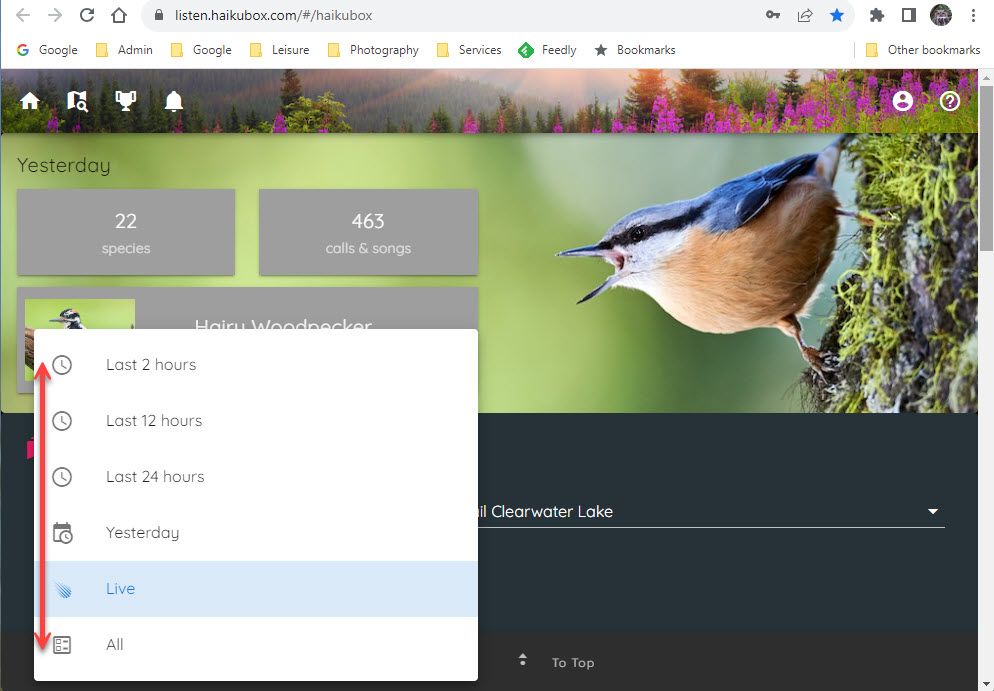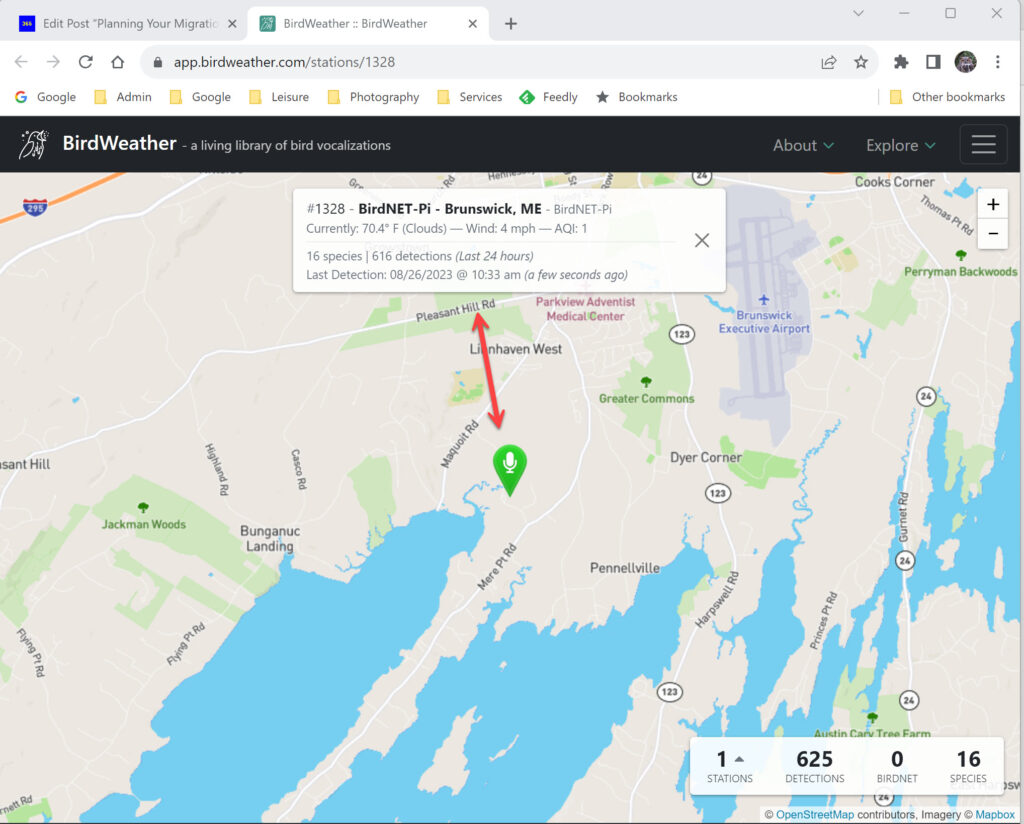I had not expected this week to be Red-Headed Woodpecker Week, but these gorgeous scarlet headed birds made the decision for me. When Sunday morning dawned sunny and clear, I decided I had to get out birding before the long drive back north to Duluth from Milwaukee. Via earlier research that same weekend, I had discovered a delightful birding area … with Red-Headed Woodpeckers, Donges Bay Gorge Natural Area. This small park just north of Milwaukee was extremely birdy, and during migration due to its location right on the Lake Michigan Flyway, birds must irrupt! Better, yet … as a small, less popular park I had the region essentially to myself (make sure you hike Wendy’s Trail right next to the gorge).
Yesterday I continued Red-Headed Woodpecker Week. Due to a quick medical appointment down in the Twin Cities, I made a round trip south Tuesday. In Bethel a bit north of the metropolitan area I have grown to love the Fish Lake Nature Trails. Years ago the Cedar Creek Ecosystem which borders and includes the trails became my “go to” place to find these woodpeckers. The University of Minnesota manages the area, and has ongoing research. Anyhow, yesterday morning the research crew was having University of Minnesota students out to the area, and early in the morning I had a great conversation about the Red-Headed Woodpecker Recovery Project with one of the top researchers. He was extremely interested in my knowledge of where Red-Headed Woodpeckers nesting holes are located in the Northland, and we plan to follow up with each other. The Duluth area is really pushing the limit of this woodpecker’s range.
